-
 Bitcoin
Bitcoin $76,444.7530
-3.77% -
 Ethereum
Ethereum $1,473.8355
-5.46% -
 Tether USDt
Tether USDt $0.9991
-0.08% -
 XRP
XRP $1.7965
-5.51% -
 BNB
BNB $553.4919
-0.36% -
 USDC
USDC $0.9999
-0.02% -
 Solana
Solana $105.2981
-1.74% -
 TRON
TRON $0.2303
0.81% -
 Dogecoin
Dogecoin $0.1422
-4.62% -
 Cardano
Cardano $0.5587
-4.41% -
 UNUS SED LEO
UNUS SED LEO $8.9866
1.01% -
 Toncoin
Toncoin $2.9933
-4.74% -
 Chainlink
Chainlink $10.9113
-4.81% -
 Stellar
Stellar $0.2215
-4.76% -
 Avalanche
Avalanche $16.1163
-3.29% -
 Sui
Sui $1.9371
-3.89% -
 Shiba Inu
Shiba Inu $0.0...01065
-6.69% -
 Hedera
Hedera $0.1469
-3.29% -
 MANTRA
MANTRA $6.2058
-1.53% -
 Dai
Dai $1.0000
0.01% -
 Bitcoin Cash
Bitcoin Cash $269.3457
-2.08% -
 Polkadot
Polkadot $3.3773
-5.87% -
 Litecoin
Litecoin $69.2204
-2.50% -
 Ethena USDe
Ethena USDe $0.9986
-0.01% -
 Bitget Token
Bitget Token $4.0180
-3.25% -
 Pi
Pi $0.5649
-4.50% -
 Hyperliquid
Hyperliquid $11.1928
-2.80% -
 Monero
Monero $195.3885
-4.41% -
 OKB
OKB $50.9235
-0.59% -
 Uniswap
Uniswap $4.7688
-6.95%
How does NFT prevent others from copying my things?
NFTs don't prevent copying of digital items but provide a verifiable record of ownership on the blockchain, ensuring the original's authenticity and value.
Apr 07, 2025 at 12:14 am

Non-Fungible Tokens (NFTs) have become a buzzword in the cryptocurrency world, primarily due to their unique ability to represent ownership of digital assets. However, a common question many people have is how NFTs prevent others from copying their digital items. To understand this, it's crucial to delve into the technology behind NFTs and the broader context of digital ownership.
NFTs are built on blockchain technology, which is a decentralized and immutable ledger. When you create an NFT, it's essentially a unique token on the blockchain that represents ownership of a specific digital item. This item could be a piece of art, a music file, or even a tweet. The blockchain records the ownership of this token, making it publicly verifiable and tamper-proof.
Understanding the Difference Between Ownership and Copying
One of the key points to understand is that NFTs do not prevent the copying of the digital item itself. Anyone can still take a screenshot of an NFT artwork or download a music file associated with an NFT. What NFTs do is provide a verifiable record of ownership for the original item. This means that while others can copy the item, they cannot claim ownership of the original NFT.
This distinction is crucial because it highlights the primary function of NFTs: to establish and prove ownership, not to protect against copying. The value of an NFT often lies in its uniqueness and the social recognition of its ownership, rather than the digital file itself.
How Blockchain Ensures the Integrity of Ownership
The blockchain's role in NFTs is pivotal. When an NFT is created, it's minted on the blockchain, and its ownership is recorded in a way that cannot be altered without consensus from the network. This immutability ensures that once you own an NFT, your ownership is secure and verifiable by anyone with access to the blockchain.
- The blockchain uses cryptographic methods to secure transactions and ownership records.
- Each NFT has a unique identifier, making it distinct from other tokens.
- Smart contracts on the blockchain can automate the transfer of ownership, ensuring that only the rightful owner can sell or transfer the NFT.
The Role of Smart Contracts in NFT Ownership
Smart contracts are self-executing contracts with the terms directly written into code. In the context of NFTs, smart contracts manage the rules of ownership and transfer. When you purchase an NFT, the smart contract automatically updates the ownership record on the blockchain, ensuring that the transfer is legitimate and recorded.
- Smart contracts can enforce royalties for creators whenever the NFT is sold.
- They can also set conditions for the use or transfer of the NFT, adding an extra layer of control for the owner.
- The automation provided by smart contracts reduces the need for intermediaries, making the process more efficient and less prone to fraud.
Limitations and Challenges in Preventing Copying
While NFTs provide a robust system for proving ownership, they face challenges in preventing the copying of the underlying digital assets. The internet's nature allows for easy replication of digital content, and NFTs do not change this fundamental aspect.
- Digital files can be easily copied or shared, regardless of the existence of an NFT.
- The value of an NFT often depends on the community's recognition of its uniqueness and the authenticity of its ownership.
- Legal frameworks around digital ownership and copyright can complement NFTs but are not inherently part of the technology.
Enhancing NFT Security and Value
To enhance the security and value of NFTs, creators and owners can take additional steps beyond the basic functionality of the blockchain. These steps can help mitigate some of the limitations associated with digital copying.
- Watermarking or embedding unique identifiers in the digital asset can help trace unauthorized copies.
- Using decentralized storage solutions like IPFS (InterPlanetary File System) can provide additional layers of security and decentralization for the digital assets linked to NFTs.
- Engaging with communities and platforms that value and enforce the uniqueness of NFTs can enhance their perceived value and reduce the impact of copying.
The Social and Cultural Value of NFTs
The value of an NFT often extends beyond its technical aspects. The social and cultural recognition of an NFT's uniqueness and ownership can significantly enhance its worth. This aspect is particularly relevant in communities where digital art, collectibles, and other unique items are highly valued.
- Communities often establish norms and values around the respect for NFT ownership.
- Platforms and marketplaces can enforce policies that protect the value of NFTs and discourage unauthorized copying.
- The narrative and story behind an NFT can contribute to its uniqueness and desirability, making it less about the digital file and more about the cultural significance.
Legal Considerations and Copyright
While NFTs provide a technological solution for proving ownership, they do not inherently address legal issues related to copyright and intellectual property. Owners of NFTs should be aware of the legal frameworks that govern digital assets and how they interact with the technology.
- Copyright laws can provide additional protection against unauthorized copying and distribution of digital assets.
- Licensing agreements can be used in conjunction with NFTs to specify the rights and permissions associated with the digital item.
- Legal action can be taken against those who infringe on the copyright of the digital asset linked to an NFT, although this is separate from the blockchain's role in proving ownership.
The Future of NFTs and Digital Ownership
As the technology and ecosystem around NFTs continue to evolve, new solutions and approaches may emerge to further enhance the security and value of digital ownership. Innovations in blockchain technology, smart contracts, and digital rights management could provide more robust mechanisms for preventing unauthorized copying and enhancing the value of NFTs.
- Advancements in blockchain interoperability could allow for more seamless and secure transfers of NFT ownership across different platforms.
- Integration with other technologies like AI and machine learning could help detect and prevent unauthorized copying more effectively.
- Evolving legal frameworks may provide clearer guidelines and protections for NFT owners, complementing the technological solutions.
Common Questions Related to NFTs and Copying
Q: Can someone copy my NFT and sell it as their own?
A: While someone can copy the digital file associated with your NFT, they cannot sell the original NFT itself as their own. The blockchain records the ownership of the NFT, and only the rightful owner can transfer or sell it. However, they can attempt to sell copies of the digital file, which is a separate issue from the NFT's ownership.
Q: How can I protect my NFT from being copied?
A: While you cannot prevent the digital file from being copied, you can take steps to enhance the value and security of your NFT. This includes using watermarking, engaging with communities that value NFT uniqueness, and leveraging legal protections like copyright and licensing agreements.
Q: What happens if someone copies my NFT and claims it as their own?
A: If someone copies your NFT and claims it as their own, they are not affecting the blockchain's record of your ownership. However, they may be infringing on your copyright or other legal rights related to the digital asset. You can take legal action against them for such infringement, but this is separate from the NFT's ownership on the blockchain.
Q: Can NFTs be used to prevent piracy?
A: NFTs alone cannot prevent piracy, as they do not stop the copying of digital files. However, they can be used in conjunction with other measures, such as legal protections and digital rights management, to help combat piracy and protect the value of digital assets.
Q: Are there any technologies that can help prevent the copying of NFTs?
A: While NFTs themselves do not prevent copying, technologies like watermarking, decentralized storage solutions like IPFS, and advanced digital rights management systems can help protect the digital assets linked to NFTs. These technologies can add layers of security and traceability to the digital files, making unauthorized copying more difficult to execute and monetize.
Disclaimer:info@kdj.com
The information provided is not trading advice. kdj.com does not assume any responsibility for any investments made based on the information provided in this article. Cryptocurrencies are highly volatile and it is highly recommended that you invest with caution after thorough research!
If you believe that the content used on this website infringes your copyright, please contact us immediately (info@kdj.com) and we will delete it promptly.
- "Cardano (ADA) Price Could Dip Below $0.60, Following Previous Market Cycle"
- 2025-04-09 05:10:12
- BONK, the well-known meme coin, has risen over 35% in the last week, attracting meme coin investors in the market. So, what caused this rally?
- 2025-04-09 05:10:12
- Bitcoin (BTC) Investors May Not Exactly Feel It, but BTC Has Been a Relatively Good Bet
- 2025-04-09 05:05:12
- Donald's Bitcoin (DONBTC) Could Turn Early Investors into Multi-Millionaires, Like Shiba Inu (SHIB) and Dogecoin (DOGE) Did
- 2025-04-09 05:05:12
- 6 Upcoming Kraken Listings That Could Be the Next Big Thing in Crypto
- 2025-04-09 05:00:13
- COTI Unveils New Privacy-Focused Blockchain to Reshape Web3 Transactions
- 2025-04-09 05:00:13
Related knowledge
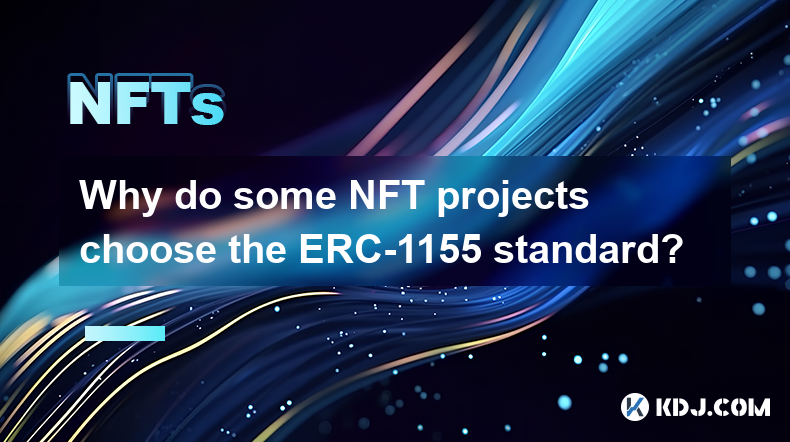
Why do some NFT projects choose the ERC-1155 standard?
Apr 08,2025 at 11:49am
The world of Non-Fungible Tokens (NFTs) has seen a significant rise in popularity and innovation, leading to the development of various token standards. Among these, the ERC-1155 standard has emerged as a versatile and efficient choice for many NFT projects. This article delves into the reasons why some NFT projects opt for the ERC-1155 standard, explor...
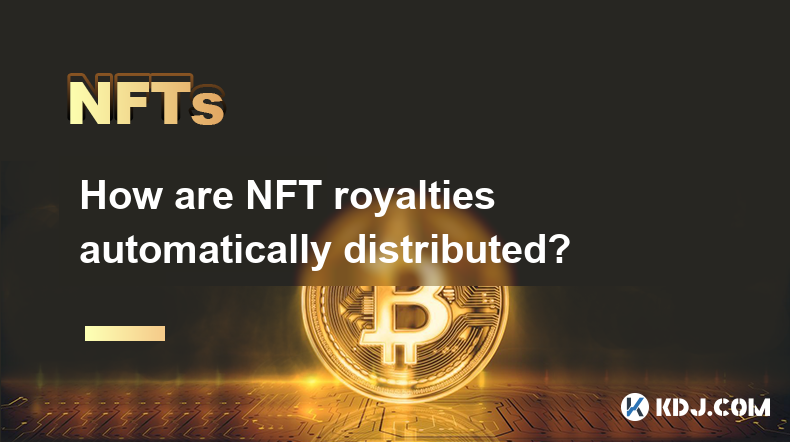
How are NFT royalties automatically distributed?
Apr 08,2025 at 08:14pm
NFTs, or Non-Fungible Tokens, have revolutionized the digital art and collectibles market by providing a way to prove ownership and authenticity of digital assets. One of the most intriguing features of NFTs is the ability to automatically distribute royalties to creators whenever their work is resold. This article will delve into the mechanisms behind ...
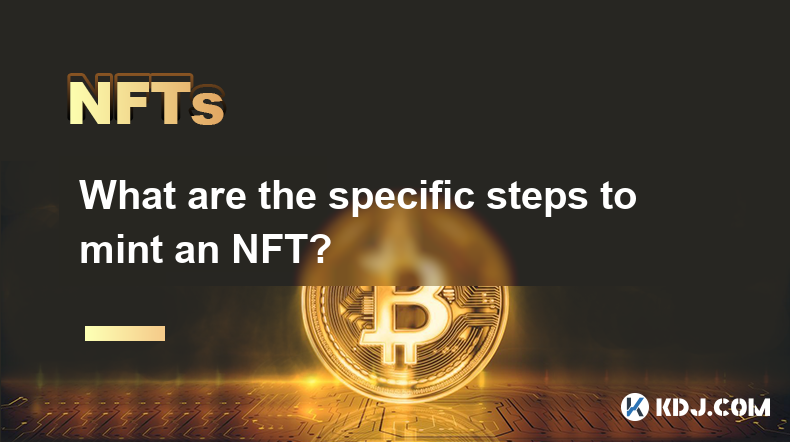
What are the specific steps to mint an NFT?
Apr 08,2025 at 05:22pm
Introduction to NFT MintingMinting an NFT, or Non-Fungible Token, involves creating a unique digital asset on a blockchain. This process allows artists, creators, and collectors to tokenize their work, ensuring its authenticity and ownership. Understanding the steps to mint an NFT is crucial for anyone looking to enter the world of digital collectibles....
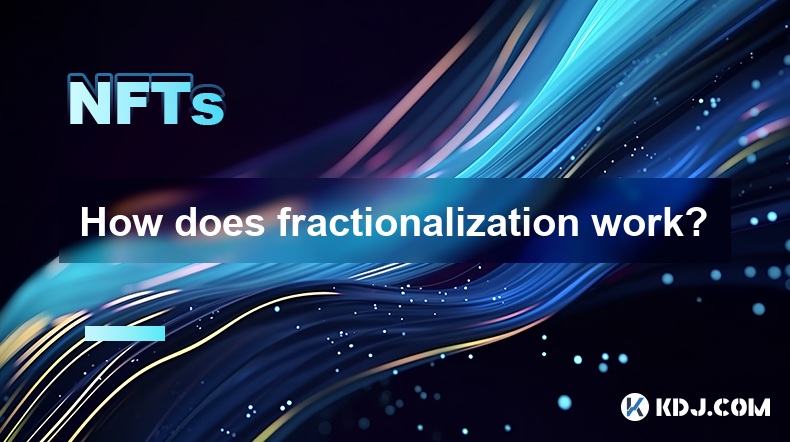
How does fractionalization work?
Apr 08,2025 at 07:42pm
How does fractionalization work? Fractionalization in the context of cryptocurrencies and blockchain technology refers to the process of dividing a single asset into smaller, more manageable pieces. This concept has revolutionized the way investors and users interact with high-value assets, making them more accessible and liquid. In this article, we wil...
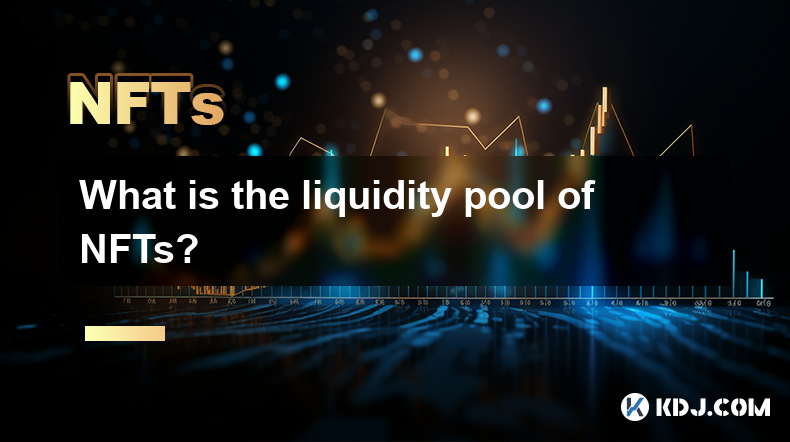
What is the liquidity pool of NFTs?
Apr 08,2025 at 05:35pm
The concept of liquidity pools has become increasingly popular within the cryptocurrency and decentralized finance (DeFi) ecosystems. While traditionally associated with token swaps, the idea has extended to the realm of Non-Fungible Tokens (NFTs). Liquidity pools for NFTs are mechanisms that facilitate the trading and exchange of these unique digital a...

What are the common ways to participate in the NFT whitelist?
Apr 08,2025 at 08:28pm
Participating in an NFT whitelist can be an exciting opportunity for enthusiasts and investors looking to secure their spot in upcoming NFT drops. The whitelist often grants early access or special privileges, such as lower minting fees or guaranteed allocations. Here, we will explore the common ways to participate in an NFT whitelist, detailing each me...

Why do some NFT projects choose the ERC-1155 standard?
Apr 08,2025 at 11:49am
The world of Non-Fungible Tokens (NFTs) has seen a significant rise in popularity and innovation, leading to the development of various token standards. Among these, the ERC-1155 standard has emerged as a versatile and efficient choice for many NFT projects. This article delves into the reasons why some NFT projects opt for the ERC-1155 standard, explor...

How are NFT royalties automatically distributed?
Apr 08,2025 at 08:14pm
NFTs, or Non-Fungible Tokens, have revolutionized the digital art and collectibles market by providing a way to prove ownership and authenticity of digital assets. One of the most intriguing features of NFTs is the ability to automatically distribute royalties to creators whenever their work is resold. This article will delve into the mechanisms behind ...

What are the specific steps to mint an NFT?
Apr 08,2025 at 05:22pm
Introduction to NFT MintingMinting an NFT, or Non-Fungible Token, involves creating a unique digital asset on a blockchain. This process allows artists, creators, and collectors to tokenize their work, ensuring its authenticity and ownership. Understanding the steps to mint an NFT is crucial for anyone looking to enter the world of digital collectibles....

How does fractionalization work?
Apr 08,2025 at 07:42pm
How does fractionalization work? Fractionalization in the context of cryptocurrencies and blockchain technology refers to the process of dividing a single asset into smaller, more manageable pieces. This concept has revolutionized the way investors and users interact with high-value assets, making them more accessible and liquid. In this article, we wil...

What is the liquidity pool of NFTs?
Apr 08,2025 at 05:35pm
The concept of liquidity pools has become increasingly popular within the cryptocurrency and decentralized finance (DeFi) ecosystems. While traditionally associated with token swaps, the idea has extended to the realm of Non-Fungible Tokens (NFTs). Liquidity pools for NFTs are mechanisms that facilitate the trading and exchange of these unique digital a...

What are the common ways to participate in the NFT whitelist?
Apr 08,2025 at 08:28pm
Participating in an NFT whitelist can be an exciting opportunity for enthusiasts and investors looking to secure their spot in upcoming NFT drops. The whitelist often grants early access or special privileges, such as lower minting fees or guaranteed allocations. Here, we will explore the common ways to participate in an NFT whitelist, detailing each me...
See all articles






















































































